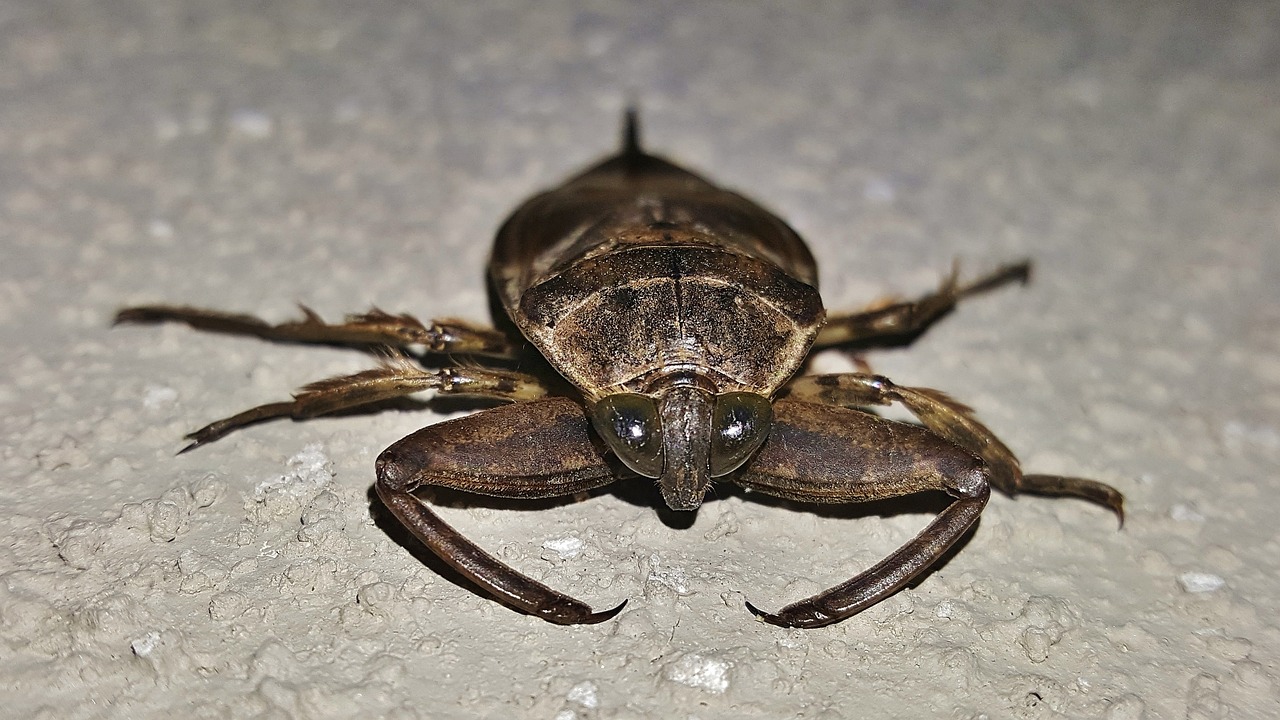Cockroaches and waterbugs are common pests that often cause confusion due to their similar appearance. Understanding the differences between these two pests is crucial for effective pest management and prevention. This blog post will discuss the characteristics, behaviors, and habitats of a waterbug vs roach to provide you with the knowledge you need to identify and deal with these pests effectively.
What is a Waterbug?
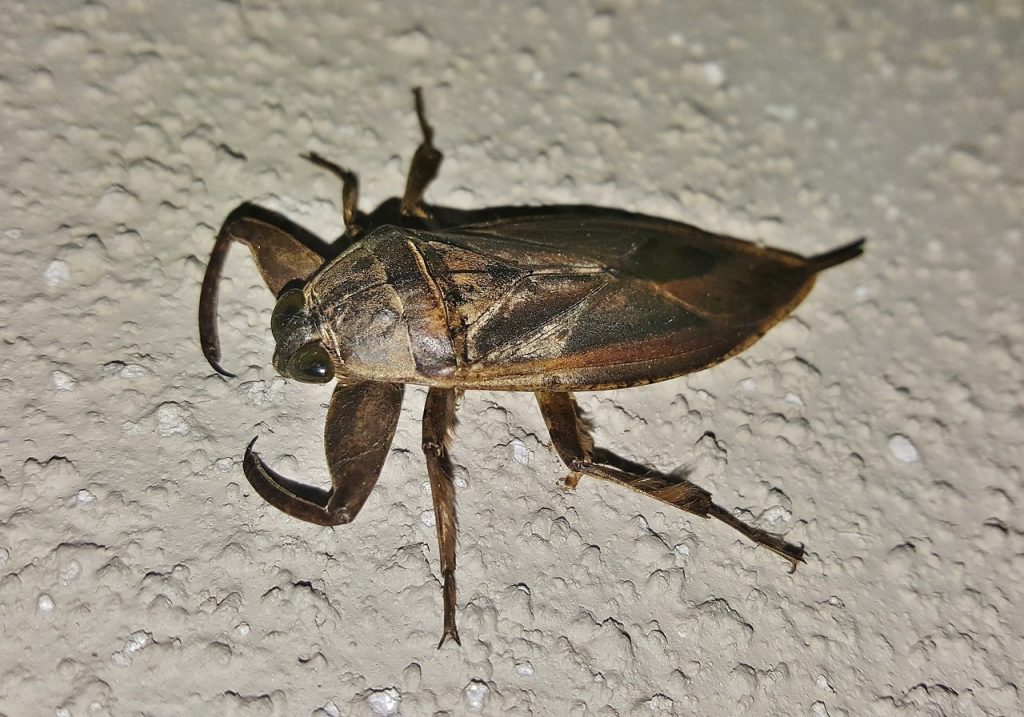
Waterbugs are often mistaken for cockroaches due to their similar appearance and habitat preferences. However, waterbugs belong to a different category of insects and have distinct characteristics.
Characteristics of Waterbugs
Waterbugs are typically larger than most cockroaches, reaching up to two inches in length. They are usually brown or grayish in color and have a shiny appearance. Unlike cockroaches, waterbugs do not have long antennae. Male waterbugs have wings and can glide short distances.
Habitat and Behavior
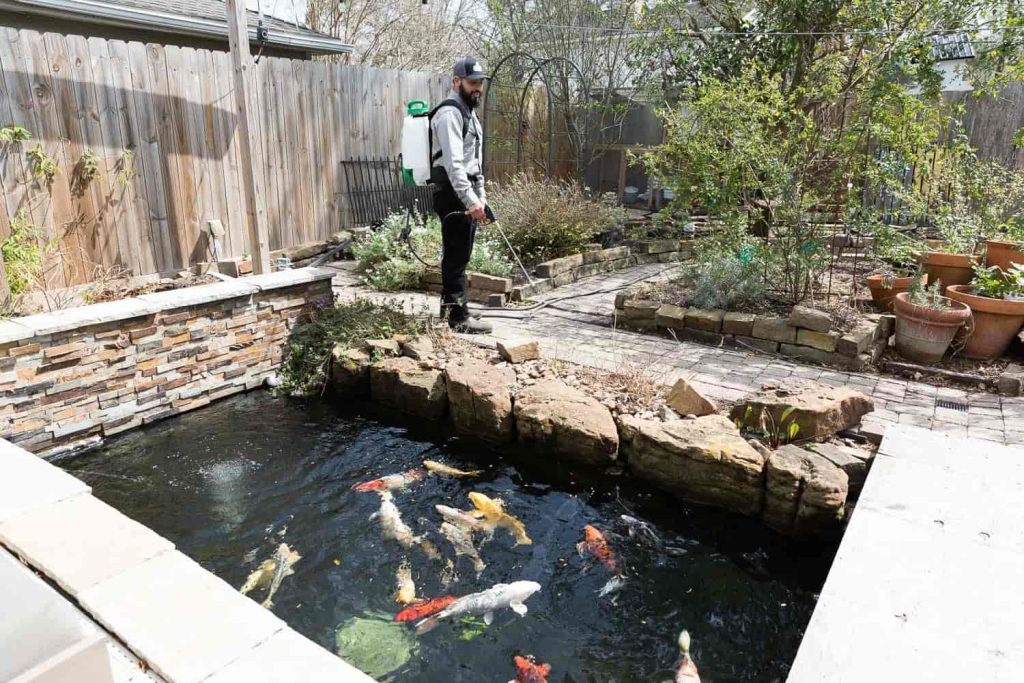
Waterbugs prefer cool, damp environments and are commonly found in areas with abundant water sources, such as basements, bathrooms, and near plumbing leaks. They are scavengers and can survive for up to two weeks without water and a month without food. Waterbugs can transmit diseases like dysentery and gastroenteritis through contact with their droppings and bodies.
Waterbug Life Cycle
The waterbug life cycle consists of three stages: egg, nymph, and adult. Female waterbugs lay eggs in moist, secure environments, often near water sources, with the incubation period varying by species. Upon hatching, the nymphs, which resemble smaller versions of adults but without fully developed wings, emerge and go through several molts as they grow.
This nymph stage can last from a few weeks to several months, depending on environmental conditions and food availability. Once they reach adulthood, waterbugs can reproduce, perpetuating the cycle and potentially leading to infestations if not controlled. Effective pest management requires targeting all stages of the waterbug life cycle to prevent their spread.
Identification and Health Risks
Identifying waterbugs involves looking for their distinctive size, color, and habitat. They produce foul-smelling secretions that often create a musty odor in infested areas. Due to their ability to transmit diseases, it’s essential to address waterbug infestations promptly.
What is a Cockroach?
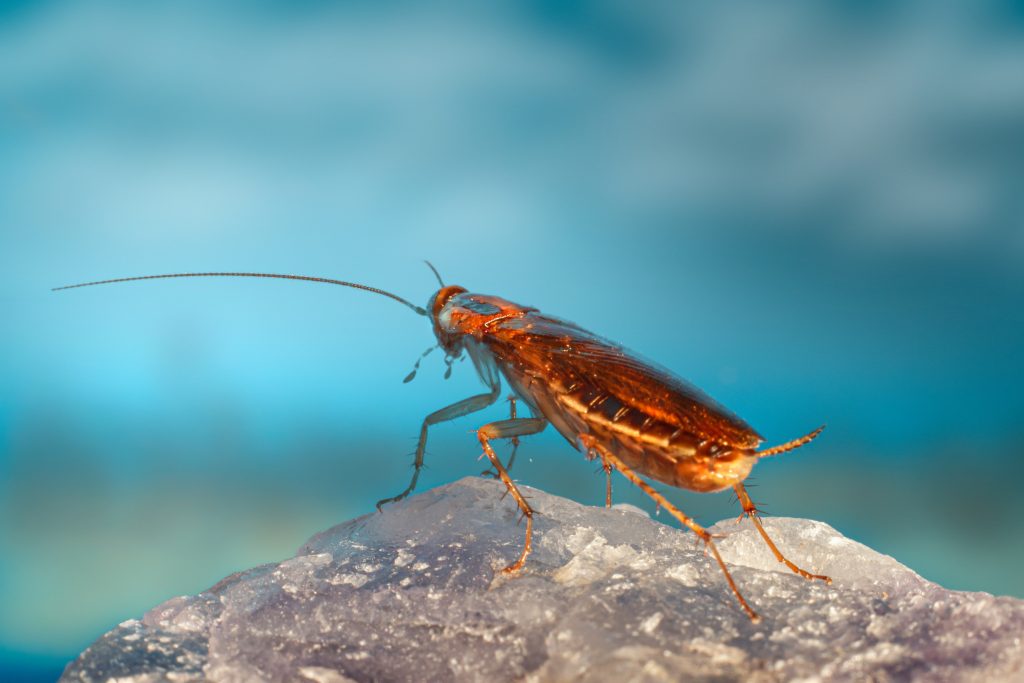
Cockroaches are resilient pests known for their adaptability and survival skills. They belong to the order Blattodea and are characterized by their flattened bodies, long antennae, and six legs.
Characteristics of Cockroaches
Cockroaches vary in size and color depending on the species. They typically have oval-shaped bodies with colors ranging from light brown to dark brown or black. Some species have distinctive markings or patterns. Cockroaches are commonly found in warm, humid environments with access to food and water.
Habitat and Behavior
Cockroaches are scavengers that feed on a wide range of organic matter, including food crumbs, grease, and even book bindings. They can survive for weeks without food but require water more frequently. Cockroaches are known to carry bacteria, viruses, and parasites, posing health risks such as allergies, asthma exacerbation, and the spread of diseases like salmonellosis and typhoid fever.
Cockroach Life Cycle
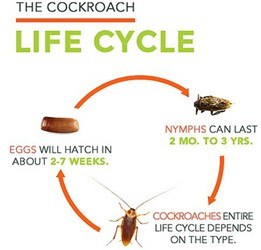
Understanding the cockroach life cycle is key to effective pest control. Cockroaches undergo incomplete metamorphosis, with three stages: egg, nymph, and adult. Females deposit eggs in ootheca, which hatch into nymphs. Nymphs resemble adults but lack wings and reproductive organs, molting several times as they grow.
Once they reach adulthood, cockroaches can reproduce, leading to rapid population growth if not managed. Effective control measures must target all stages of the life cycle to prevent infestations. For eco-friendly pest control solutions, contact NaturalCare Pest Control for expert assistance.
Identification and Health Risks
Identifying cockroaches involves noting their long antennae, reddish or brownish color, and habitat preferences. Cockroaches are notorious for spreading germs and can trigger allergies and asthma in some people. Effective pest control measures are crucial to managing cockroach infestations and preventing health risks.
Difference Between a Cockroach and Waterbug
Understanding the key differences between a cockroach and a waterbug is essential for effective identification and pest control.
Size and Appearance

Waterbugs are generally larger than cockroaches, often reaching up to two inches in length. They are usually darker and shinier than most cockroach species. Cockroaches, on the other hand, vary in size and color, with long antennae that distinguish them from waterbugs.
Habitat Preferences
Waterbugs prefer cool, damp environments and are often found in areas with abundant water sources. Cockroaches are more adaptable and can thrive in various environments, but they prefer warm, dark, and moist areas like kitchens, bathrooms, and basements.
Behavioral Traits
Waterbugs are typically solitary and can glide short distances using their wings. Cockroaches are more social and often found in groups. They are scavengers and can survive on a wide range of organic matter.
How to Get Rid of Waterbugs
Effective strategies for getting rid of waterbugs involve a combination of prevention measures and targeted treatment options.
Prevention Tips
Preventing waterbug infestations involves eliminating water sources and maintaining a clean environment. Fix leaky faucets and pipes, clean damp areas, and ensure all food sources are secure and inaccessible to pests.
Effective Treatment Options
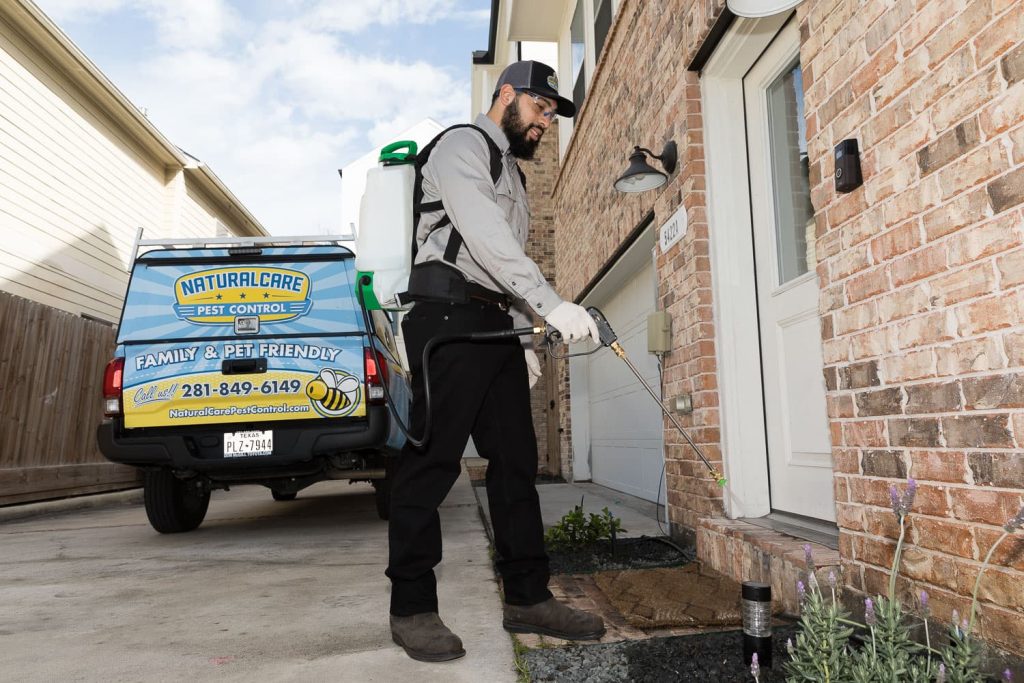
If you encounter waterbugs in your home, using waterbug killers like bait stations or gel baits can help eliminate them. Professional pest control services can provide targeted treatments to address severe infestations and ensure long-term pest management.
Final Words on Waterbugs vs Roaches
In conclusion, understanding the differences between cockroaches vs waterbugs is crucial for effective pest management. Waterbugs are larger, darker, and prefer damp environments, while cockroaches are more adaptable and can thrive in various settings. Both pests pose health risks and require prompt action to prevent infestations. Effective strategies include eliminating moisture sources, maintaining cleanliness, and using targeted treatments.
For severe infestations, contact NaturalCare Pest Control for eco-friendly pest control Houston Texas services.
FAQs About Waterbugs
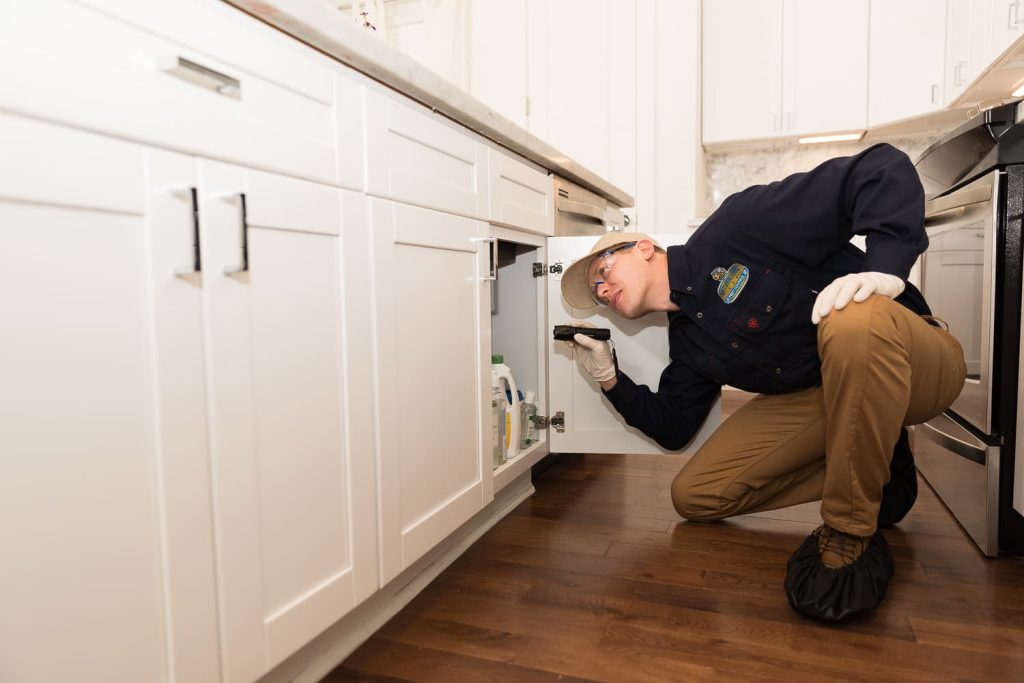
What causes waterbugs in the house?
Waterbugs are attracted to cool, damp environments with access to food and water. They can enter homes through gaps or cracks in siding, vents, or contaminated packages.
Can waterbugs fly?
Yes, male waterbugs have wings and can glide short distances. However, unlike other insects, they are not strong fliers.
How long do waterbugs live?
Waterbugs can live up to 1.5 years. During this time, a female waterbug can lay around eight egg capsules, each containing up to 16 eggs.
Are waterbugs dangerous?
Waterbugs can transmit diseases like dysentery and gastroenteritis through contact with their droppings and bodies. It’s essential to address infestations promptly to prevent health risks.
What are the signs of a waterbug infestation?
Signs of a waterbug infestation include sightings of large, dark insects in damp areas, a musty odor, and the presence of droppings.
How can I prevent waterbugs from entering my home?
To prevent waterbugs, seal gaps and cracks in your home’s exterior, maintain cleanliness, and eliminate moisture sources. Regularly clean damp areas and ensure all food is stored securely.

